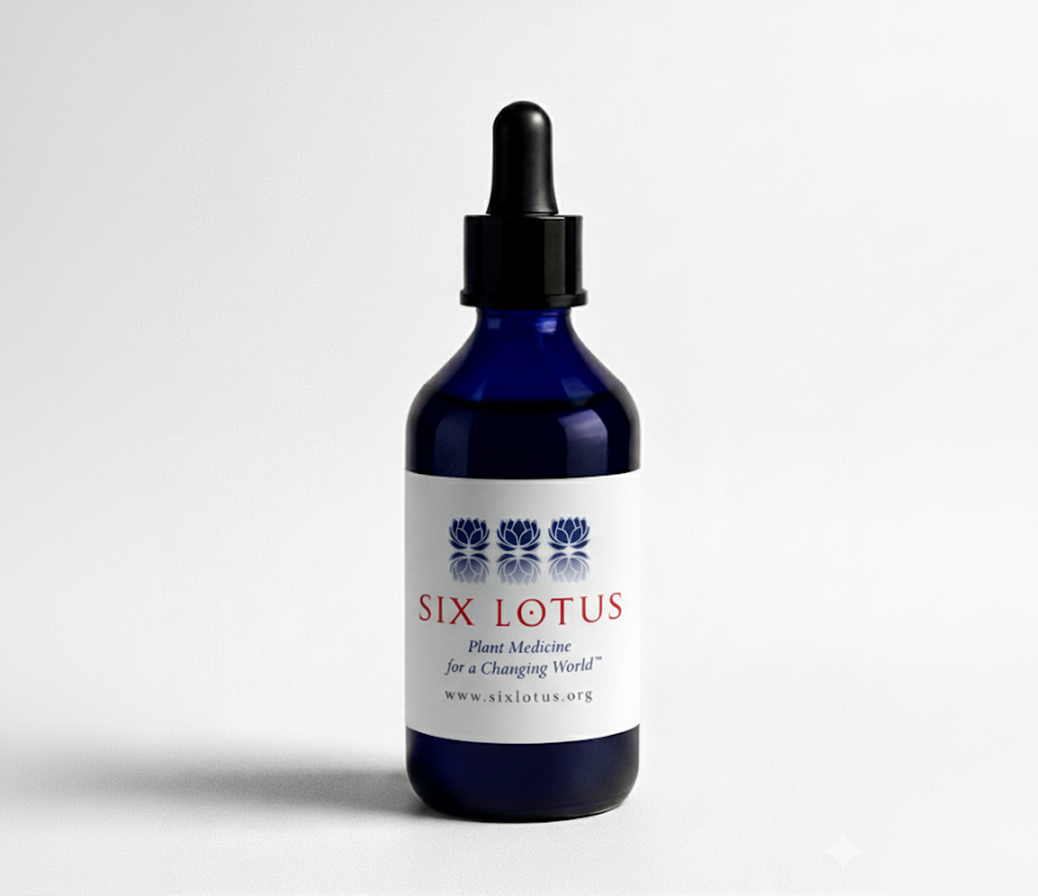Post Chemo
Restore, Rebuild, Rebalance After Treatment.
A 60mL bottle lasts 1.8 months for an adult. $54 USD.
The Post Chemo Tincture is a restorative botanical and nutritional formulation designed to aid recovery following chemotherapy. It aims to support detoxification, rebuild mucosal and epithelial integrity, stabilize immune responses, and restore antioxidant defenses. This formulation includes a blend of plant-based antioxidants, flavonoids, demulcents, and circulatory-supporting herbs in a non-GMO French vodka base.


Key Botanical Components and Mechanisms
Nymphaea caerulea (blue lotus)
Offers anxiolytic and neuroregulatory alkaloids such as nuciferine that promote relaxation, reduce sympathetic stress, and support emotional equilibrium during recovery.
Rosa spp. (rose petals)
Rich in polyphenols and volatile oils with anti-inflammatory and astringent actions, rose petals support mucosal healing and emotional well-being post-treatment.
Urtica dioica (nettle leaves)
Nettle is mineral-rich and supports blood building, immune modulation, and detoxification, making it ideal for restoring vitality post-chemotherapy.
Quercetin (powder)
A potent flavonoid with mast cell–stabilizing, anti-inflammatory, and antioxidant properties. It reduces chemo-induced oxidative burden and supports tissue regeneration.
Citrus limon (lemon) and Citrus aurantiifolia (lime)
These fruits provide vitamin C, flavonoids, and organic acids that enhance liver detoxification, antioxidant capacity, and collagen synthesis.
Syzygium aromaticum (clove powder)
Contains eugenol, a compound with strong antioxidant and antimicrobial properties. Clove supports oral and gastrointestinal healing and enhances systemic resilience.
Sesamum indicum (white sesame seeds)
Provides lignans and essential fatty acids that regulate inflammation, support NRF2 antioxidant pathways, and restore cell membrane integrity.
Solvent System
Non-GMO French Vodka: This 40% ethanol base facilitates broad-spectrum phytochemical extraction while maintaining stability and preserving both hydrophilic and lipophilic constituents.
Summary
The Post Chemo tincture is designed to enhance recovery following chemotherapy by addressing inflammation, immune reactivity, oxidative damage, and digestive discomfort. Its carefully selected botanicals contribute to systemic repair, emotional recovery, and antioxidant replenishment in the weeks and months after chemotherapy has concluded.
What You Can Do To Support Your Body
Post-Treatment Recovery
Goal: Support comfort, antioxidant replenishment, and gentle rebuilding.
Diet:
Fruits: Papaya, mango, blueberries, kiwi, baked apples/pears
Vegetables: Steamed carrots, beets, zucchini, spinach, peeled sweet potato
Herbs/Spices: Ginger, chamomile, calendula
Fungi: Maitake, shiitake (well-cooked)
Minerals: Iron (lentils, pumpkin seeds), zinc (sesame, hemp), electrolytes (coconut water, vegetable broths)
Beverages: Aloe vera (diluted), chamomile or peppermint tea, light broths
Lifestyle: Gentle walking, restorative yoga, frequent small meals, prioritize rest, avoid alcohol and ultra-processed foods.
Why diet matters: Soft, nourishing plant foods and gentle herbs can help replenish antioxidants and restore balance after intensive treatment, supporting the tincture’s comfort-focused purpose.
These statements have not been evaluated by the Food and Drug Administration. This product is not intended to diagnose, treat, cure, or prevent any disease.
References
Bone, K. and Mills, S., 2013. Principles and Practice of Phytotherapy: Modern Herbal Medicine. 2nd ed. Churchill Livingstone.
Chevallier, A., 2016. Encyclopedia of Herbal Medicine. DK Publishing.
Elshafie, H.S., et al., 2021. ‘The antimicrobial and antioxidant activity of Syzygium aromaticum (clove)’, Antioxidants, 10(1), p.54.
Feng, R., et al., 2020. ‘Citrus polyphenols in gut and systemic health’, Food & Function, 11(11), pp.9832–9849.
Kumar, S. and Pandey, A.K., 2013. ‘Chemistry and biological activities of flavonoids: an overview’, Scientific World Journal, 2013, p.162750.
Liu, J., et al., 2018. ‘Protective role of quercetin against chemotherapy-induced toxicity’, Nutrients, 10(11), p.1856.
Panahi, Y., et al., 2019. ‘The potential health effects of sesame: a review of the scientific literature’, Journal of Medicinal Food, 22(10), pp.1041–1049.



